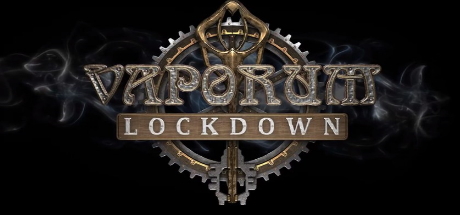Not just Grimrock with steam
Type: Singleplayer
Genre: RPG
Developer: Fatbot Games
Publisher: Fatbot Games
Release date: 15 Sep, 2020


Back in 2012 a small game called Legend of Grimrock was released, and it was a surprise hit. It brought back a long dead sub-genre of CRPGs, namely the first person tile-based dungeon crawler. After it became clear that there was a market for these kinds of games other developers went to work putting their own spin on the formula, with mixed results. One game really stood out from the pack though, and that was the original Vaporum.
Vaporum: Lockdown is a prequel to the original Vaporum, and takes place in the same massive steampunk tower as the first game, although not in the same part of the tower (it’s so big it can house several games worth of stuff!). You’re playing as Ellie, a scientist who worked in the tower when things went horribly wrong, and now you need to find your way out, while finding off mutated creatures and robots that have gone insane.
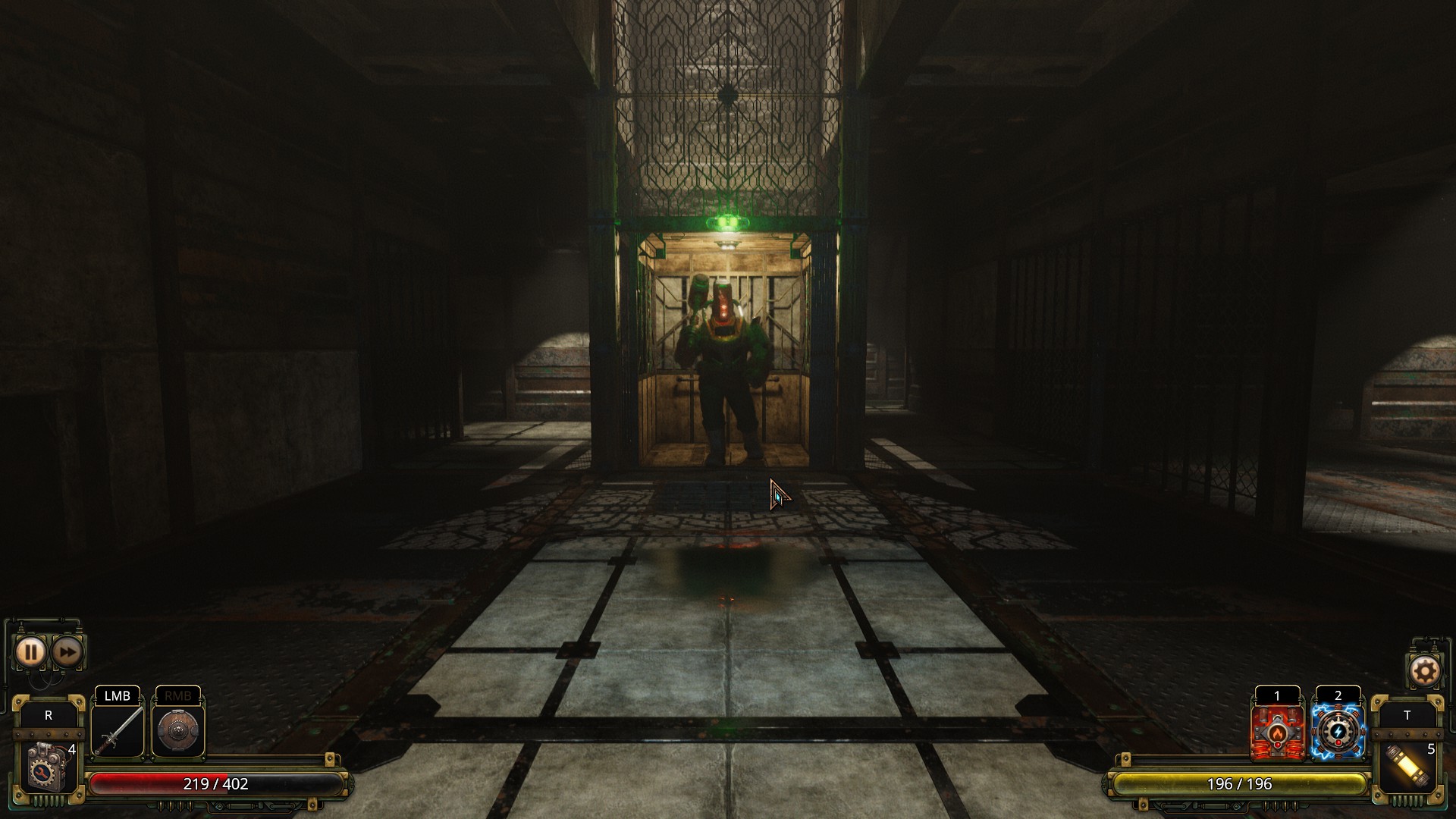
Story & Setting
Vaproum: Lockdown takes place in the tower of Arx Vaporum, a massive structure built out at sea. In it scientists have been working on a miraculous substance called fumium, which is able to act as a power source, make plants grow faster, turn common animals into huge beasts and so on. There’s hardly any limit to what this substance seem to be able to do.
But as with any substance that promises to revolutionize the world, there were drawbacks. People who are exposed to it started changing, animals grew more aggressive robots started acting erratically.
You’re Ellie Teller, a young scientist who got recruited to work in the Arx Vaporum by a former professor at her university. During an experiment with teleporters something goes horribly wrong. Not with you, or the teleporters, but in the tower. Machines start attacking people and mutated creatures are starting to crawl out of the vents. And now you need to find your way out of there.
Like with most dungeon crawlers, the story is not what you’ll be playing the game for, and while the setting itself is interesting, and has a lot of potential, the main story of you being forced to escape is not very exciting. There is a lot of world building done through text and audio logs scattered all over the place though, and they hint at something far grander than just the portion of the tower that you get to see.
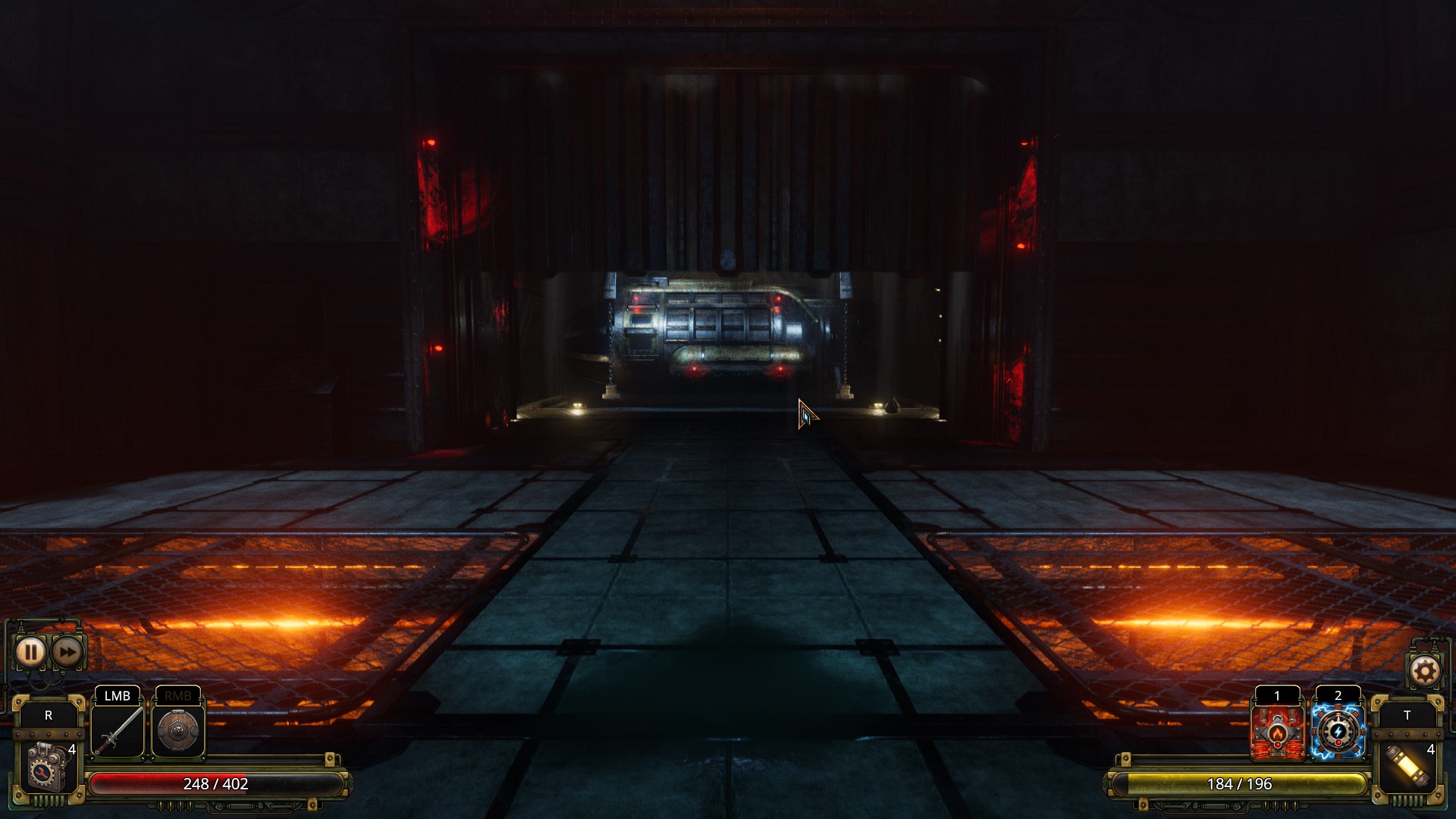
Presentation
For a game made by a very small indie studio, Vaporum: Lockdown is darn good looking, and punches well above its weight class with its graphics. A lot of this is owed to the art direction, lightning, and the clever use of effects, and it also helps that you’ll never get too close to anything. The developers very cleverly used slight blurring effects to hide things that would have looked a bit janky, something that’s not noticeable until you look at screenshots from the game.
Vaporum: Lockdown takes place in what’s effectively a big dungeon, and the places you visit are dark and moody. It is surprisingly varied though, despite some areas using similar or the same design. You’ll go from the industrial looking areas with red brick walls, small yellow lights and metal pipes, to the almost clinical looking hydroponics area, with its white tiles and cold white lightning to more living and office-like areas, with wallpapers that look like they’re from the 1930’s. Most areas are sparsely lighted, but it’s never so dark that it’s hard to see what’s going on.
There are a bunch of different enemies populating the world, from small robots, to giant roaches and rats, to humans who have been changed by fumium and larger robots, as well as a few others. The more robotic looking enemies generally look better than the organic ones, and there are some inventive designs for the smaller robotic enemies in particular. Despite their designs not always making a whole lot of sense, they still somehow feel like they fit well into the world.
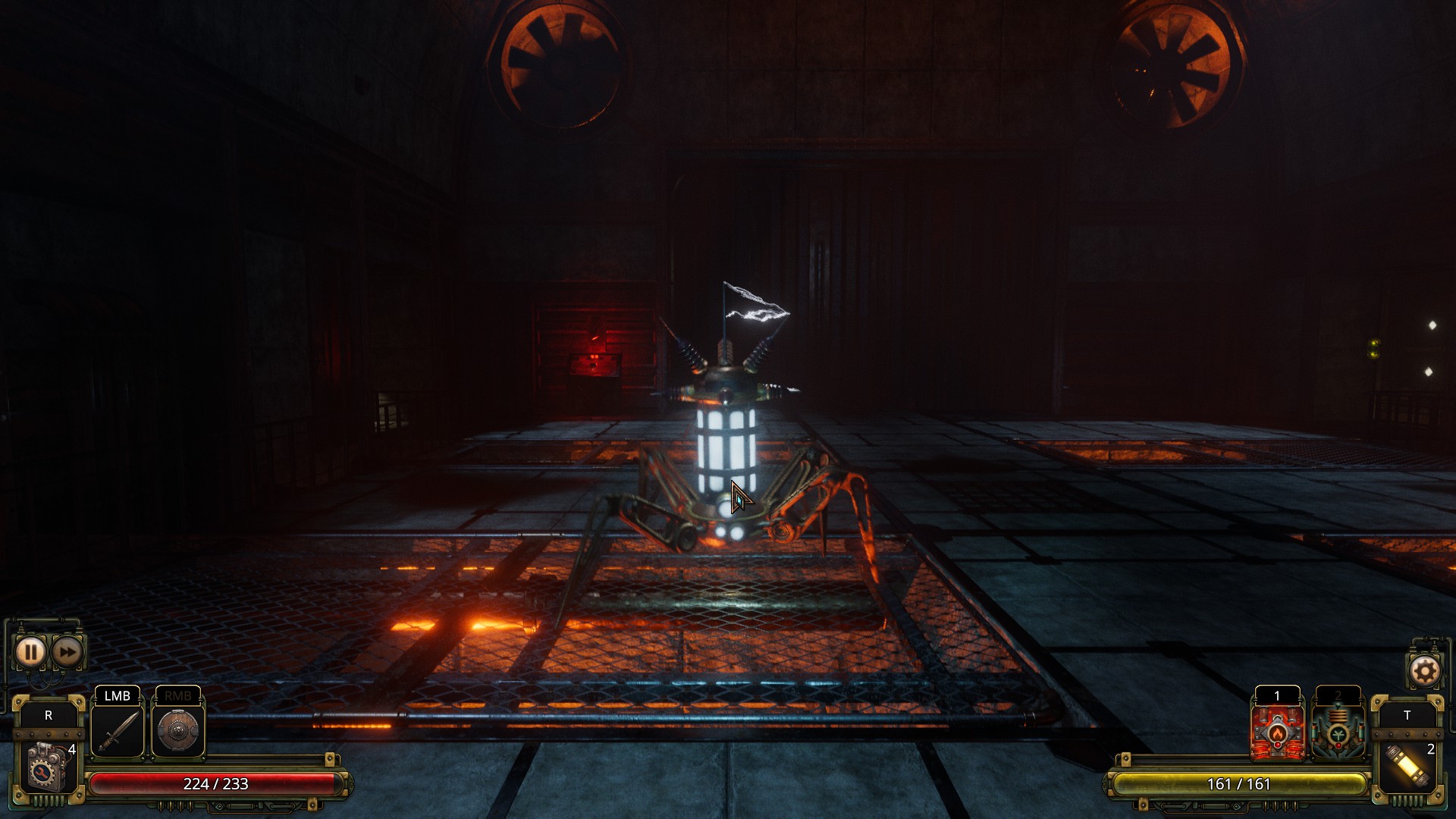
The games soundscape might not be quite as impressive as its graphics, but it’s still by no means bad. The music has an almost eerie tone to it, that does a good job at building an atmosphere, and there’s also some good ambient sound, particularly in the more industrial areas, where the sound of machinery somehow adds to the oppressive feel of the place.
Voice acting can often be very hit or miss in indie games, but Vaporum: Lockdown does a pretty good job at it. There’s not a lot of voiced dialogue in the game, and most of the logs you find are just text, but when there’s voice acting, it’s more than fine. The voice actors are maybe on the same level as what you would find in say a Bioware title, but they’re better than those in most mid-budget games.
Realism is not really something that the developers prioritized when they made the levels, and they seem to have been fully aware of how needlessly complex and dangerous the locations end up being. You’re supposed to be in a place where people used to live and work, so why are spike pits, maze-like corridors and needlessly complicated ways to operate switches? It makes for a fun game, but nobody in their right mind would actually build something like this. You even find the illogical design mentioned in the games logs, so this is not a System Shock, where they built the station first, and then decided what areas to lock off in order to make a believable setting with a logical layout.
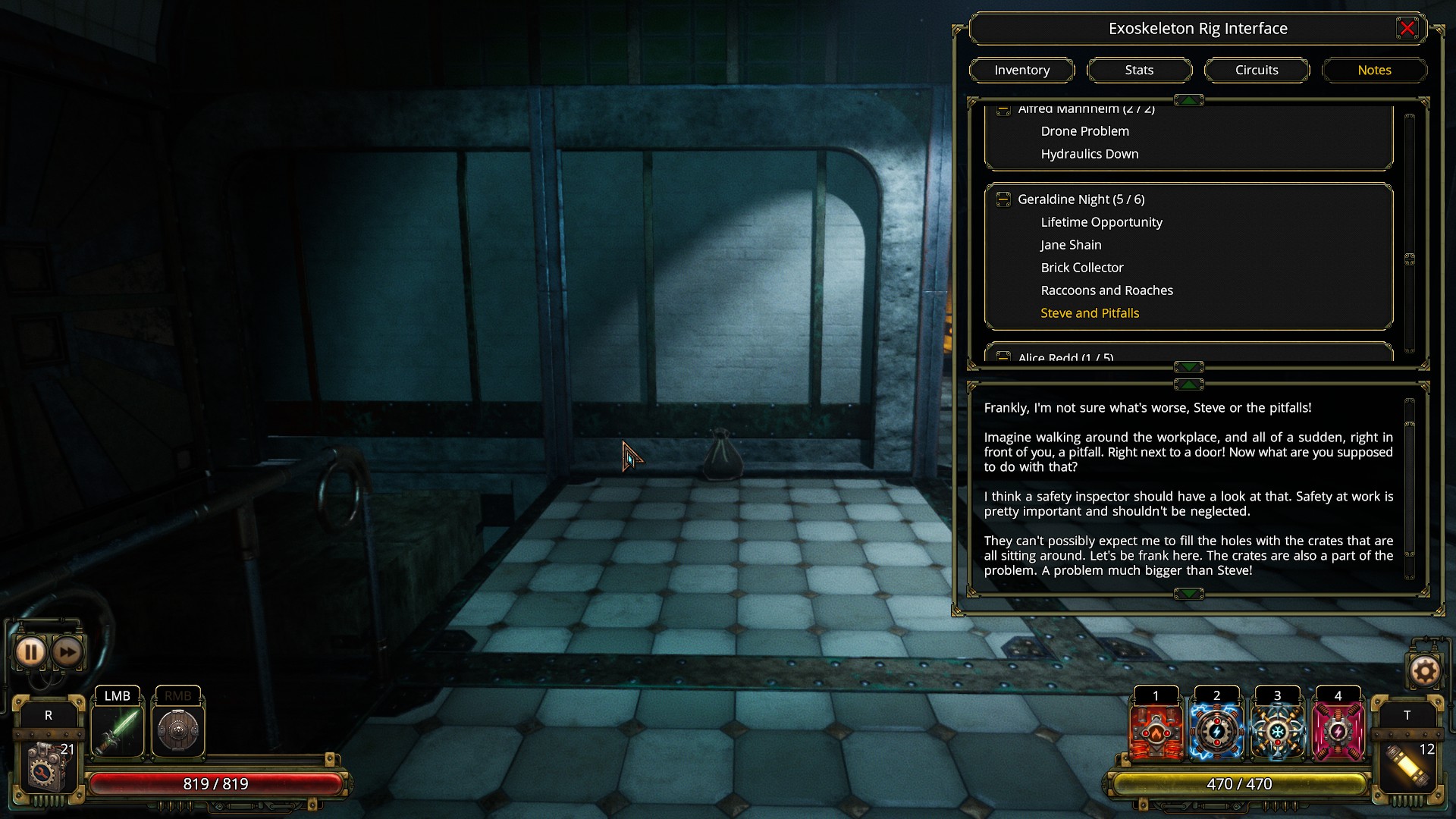
Gameplay
If you’ve ever played games like Legend of Grimrock, Eye of the Beholder or Dungeon Master, the basic gameplay will feel immediately familiar here. The game is viewed from a first person perspective, and movement is on a grid. Both you and the enemies stick to this grid, and every time you, or they, take a step, they’ll move one entire square. This way of doing movement can feel a bit weird and archaic, but it comes with some upsides. It’s easy to judge distances, everything from movement to attacks to throwing objects will be done in these full squares, and there’s no ambiguity when it comes to if an attack can or can’t hit its target. Melee attacks can only hit the square right in front of you, ranged attacks can hit a few squares ahead of you, and abilities will generally either hit the square right in front of you, a few squares in front of you, or the 8 squares surrounding you. And with some very specific exceptions, enemies also follow these rules.
Combat in Lockdown functions similarly to that of the games that came before it. You’ll end up doing an elaborate dance around enemies, trying to step out of the way of their attacks, waiting for them to move into attack range from you and striking them before they have the chance to respond, baiting out more dangerous attacks and so on. A single enemy is not really a threat to you and you can very easily dodge all of its attacks, as they’re predictable and well telegraphed. That is, as long as you have a large enough space to move around in. Some enemies have the ability to turn squares temporarily dangerous to you, and in a confined space, you need to be careful with where you let the enemies attack. But it’s when there’s more than one foe that things start to get interesting. Suddenly you need to dance around several foes, always being aware of their location, and what type of attacks they’re able to hit you with, and you also need to make sure that you don’t get trapped in a corner. Awareness of your surrounding is the key to success. And this can get quite complicated later on, when you’ve got enemies with area attacks, enemies that leave fire trails on the ground, spike pits and explosive barrels littering the place. Things can go downhill very fast if you’re not careful.
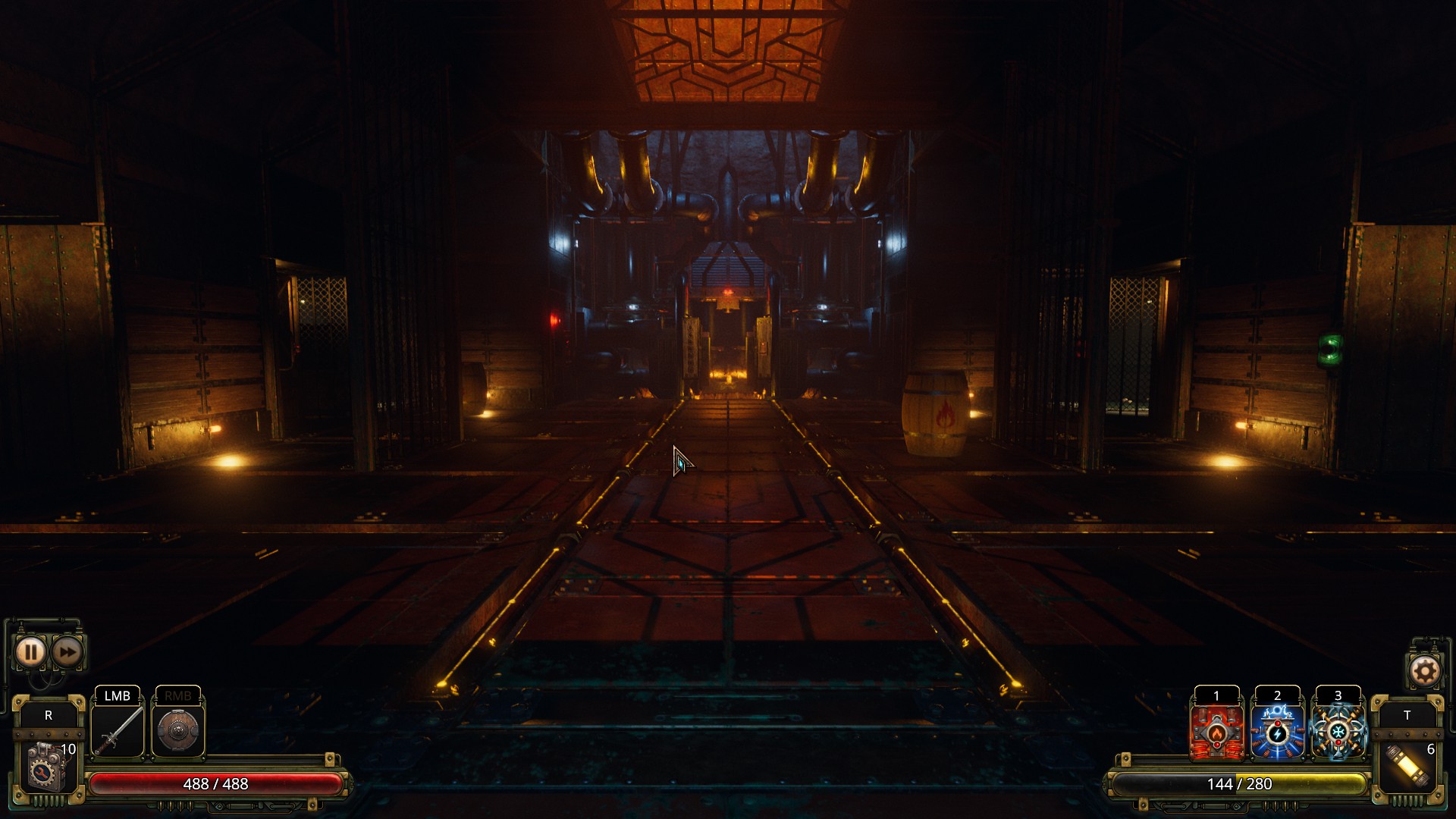
When you’re fighting you have a bunch of different tools at your disposal. The most basic of them is the humble melee attack. Whack the enemy enough times and they’ll die, simple as that. With all the dancing you’ll be doing, actually getting into melee range in a safe way is of course not that easy. You’ve also got different types of guns, that either use ammo or energy, and what the game calls “gadgets”. Gadgets are this games counterparts to spells, although you find them in containers much like any other piece of equipment. Most of them deal damage in some way, but there are a few more unique ones, like one that lets you swap place with enemies (surprisingly useful in the middle of an intense waltz next to a pit of spikes), or another that lets you summon small robots that will fight for you, and some just improves your damage output. And much like you’ll upgrade your starting mace with a mace that bashes even harder later on, each gadget also gets new and improved variants, that function the same as their previous iteration, apart from the fact that they deal more damage or summon more powerful spider robots.
Fighting is not the only thing you’ll be doing in this game though, there are also plenty of puzzles to solve. These were universally the good kind of puzzles, the ones with logical solutions. It’s the kind of puzzles where, if you’ve been stuck for a little while and finally managed to get past one, you’ll not go “Well, that’s stupid and made no sense”, instead you’ll say “I can’t believe the solution was that simple!”. Much like with combat, a bit of awareness of your surrounding is important, and sometimes opening the map can seeing the layout of a room from above can make all the difference.
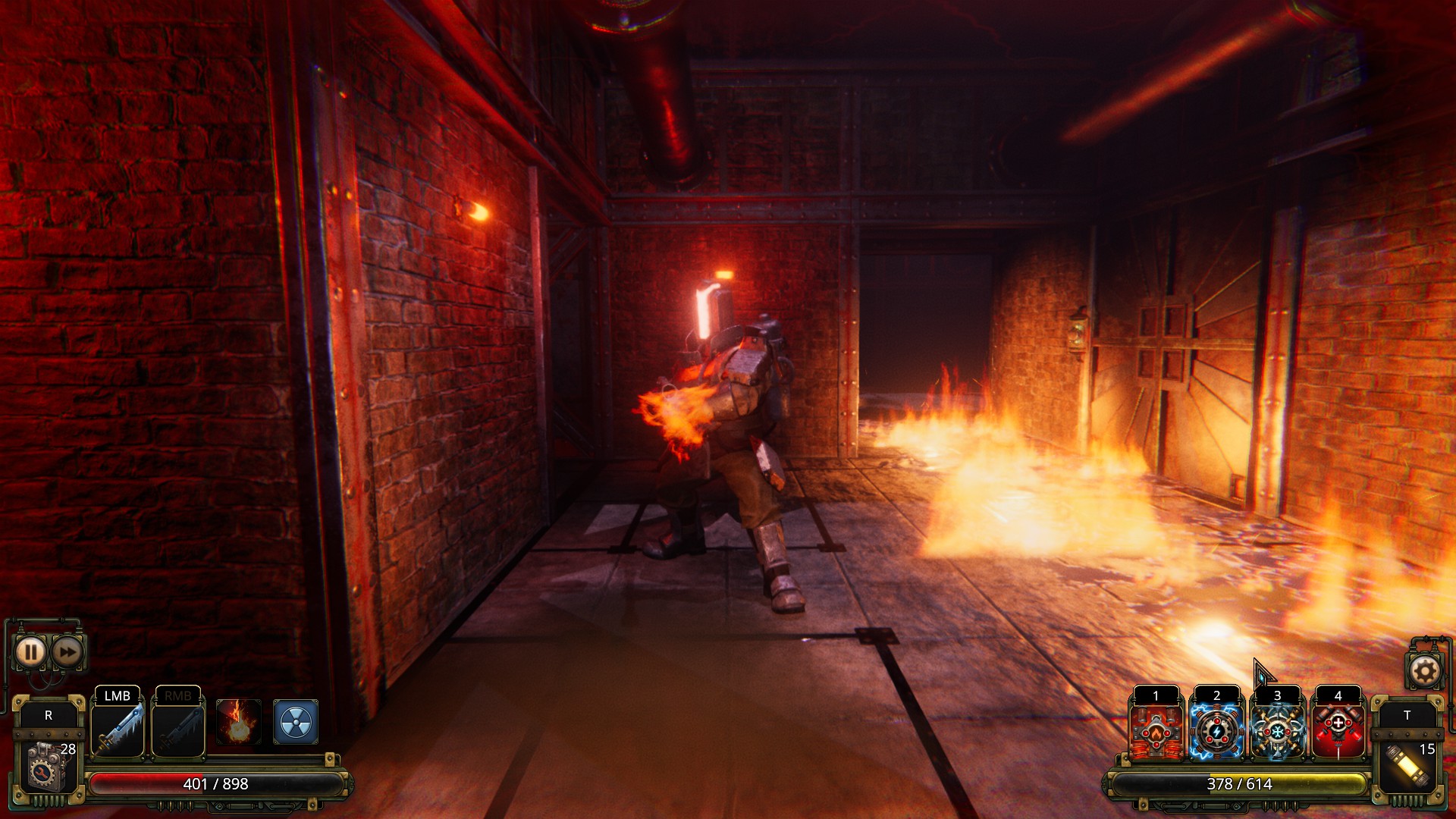
Where the game can get a bit mean is with its secrets. Every floor has a number of secrets, and you can check the menu to see how many there are. These secrets are not always telegraphed well, and the game establishes this during the tutorial. The reward for finding these secret areas is better gear, more logs and permanent stat boosts, so they are worth looking for, but they’re far from necessary to beat the game. Each individual stat boost is minor, so you can afford to miss them, but even many minor boosts add up, and completely ignoring the secrets has a noticeable effect on your characters ability to defend themselves against the nasty critters of Arx Vaporum. And if these secrets are not enough, there’s also one optional floor with some extra difficult puzzles to solve. These new puzzles were well made, but it’s good that they remained optional, as had they’ve been mandatory they could have risked slowing the game down too much.
As this is an RPG, there’s an experience point system. Defeating enemies allows you to grow in power. Leveling up is not a mostly linear affair, akin to Eye of the Beholder, instead with every level you’ll get one point to spend on upgrading your character, and there’s a lot of different categories, called circuits, to spend points on. Each point spent in a category gives you a passive boost that fits the category in question, and range from more weapon damage, to higher block chance, faster energy regeneration or boosts to your summoned creatures. At the midway point through these upgrade categories you’ll also get a specific boost that has a more drastic impact on how your character is played, and at the final point you’ll get a choice between two different permanent boosts. Maybe your elemental attacks will start acting as a HP drain on the enemy and give you health back, or maybe you’ll get a significant boost to your resistances when health is getting low. There’s also a class system here. You get to select a “rig” after the tutorial, and this will give you a boost in one category, although your chosen rig won’t strictly define how you’ll play, they’ll just nudge you in one direction or another. No matter the class you chose, you can, and should, use all the tools that are at your disposal, but if you go for a combat rig, you’ll probably rely more on your melee attacks, or you might opt for one that is better at using gadgets. These rigs inform how you play the game but they don’t define it.
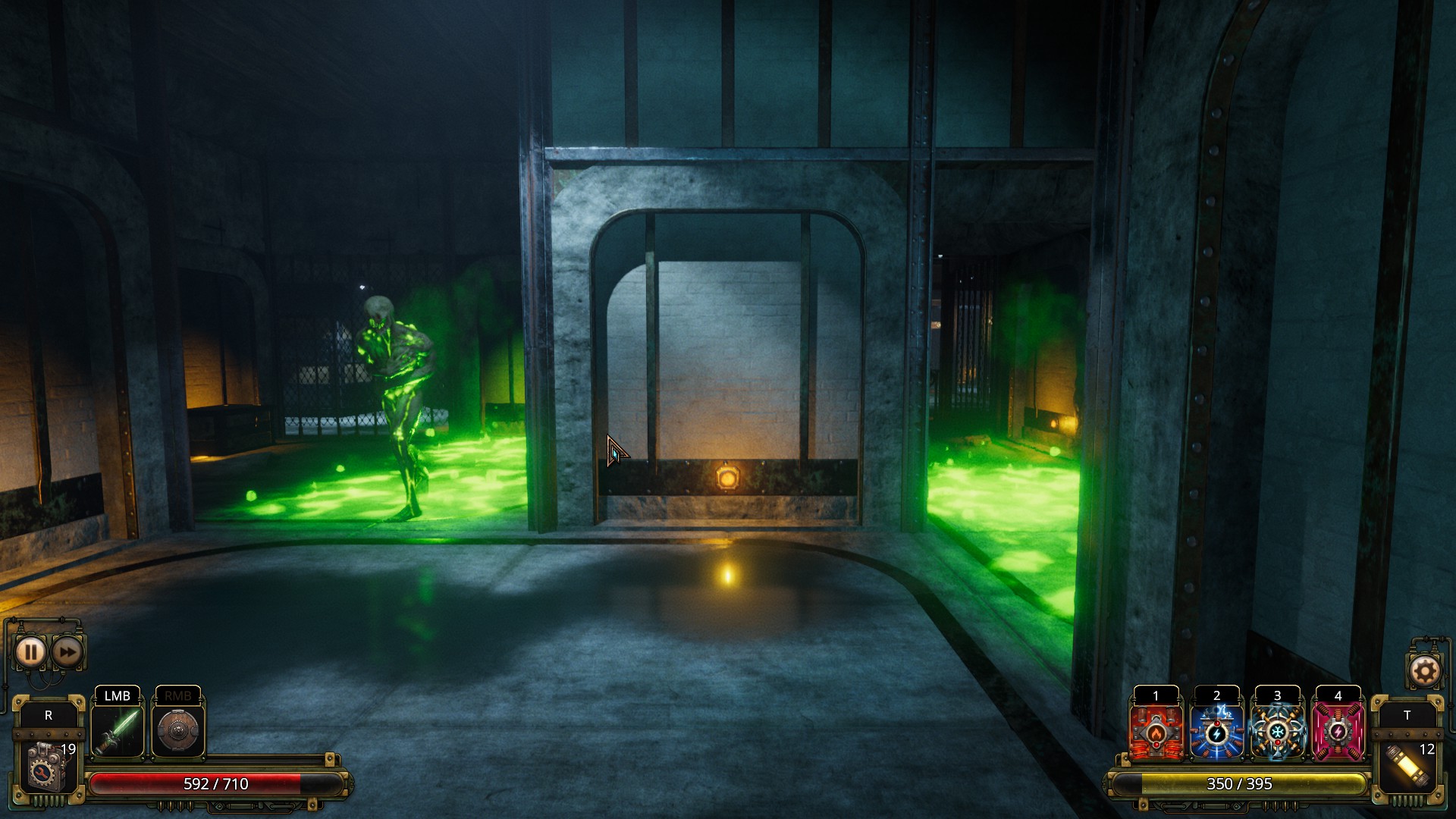
Closing Thoughts
I played the original Vaporum, and found it to be one of the best games of its type. So it was hard to not go into this one with some expectations. Luckily Vaporum: Lockdown more than lives up to those expectations. Combat is fast and fun, although ultimately very similar to the original game, but where Lockdown truly shines is with its puzzles. These has to be some of the most well designed puzzles in any RPG to date, and the balance between action and puzzle solving is really good. It’s only right at the very end of the game that this balance ends up feeling a little bit off, but even then it never ended up feeling tedious.
A lot of comparisons were drawn between Grimrock and the first Vaporum, and the same comparisons are likely to be drawn between this and Grimrock, and apart from the obvious change in setting, and the lack of a party, the games are very similar. If you enjoyed one, you’re likely to enjoy the other. Which one is better is hard to say, and that alone is high praise for Vaporum. Fans of first person RPGs, who enjoy a good brain teaser from time to time, owe it to themselves to play this one.

